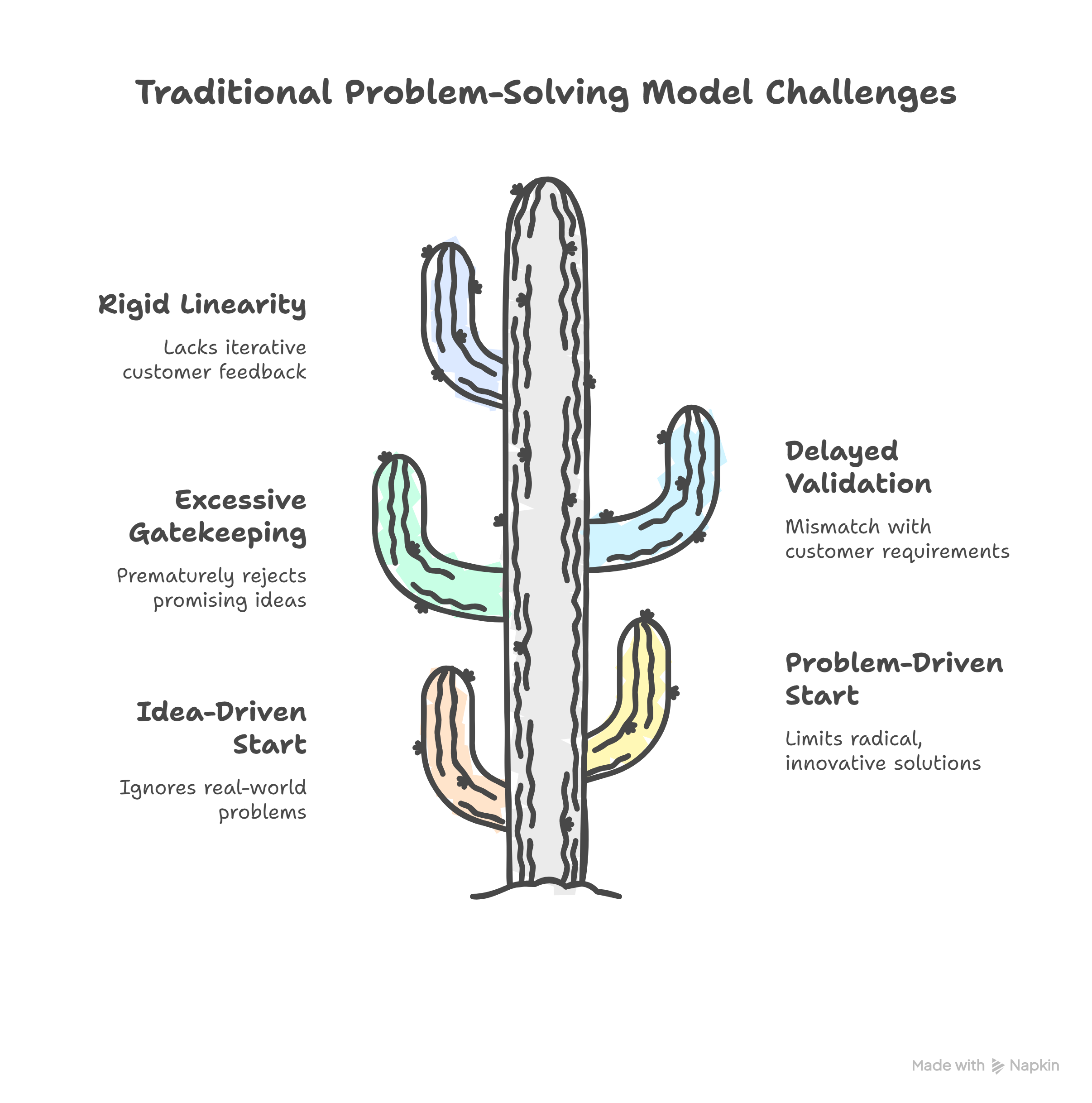The Tradition Model of Problem-Solving
Before diving into design thinking, it is important to understand the traditional model of problem-solving and its limitations. This model is often referred to as the stage-gate or waterfall model and is a linear process that has been used for about a century.
The traditional model progresses through a series of stages:
- Idea Generation: The process begins with an idea.
- Preliminary Investigation: The idea is checked to see if it qualifies for investment.
- Detailed Investigation: Further development of the idea.
- Development: The product is developed.
- Testing and Validation: The product is tested.
- Market Launch: The product is launched.
Problems with the Traditional Model
There are several significant problems with this linear, traditional approach:
1. Starting with an Idea Starting a project or company with an idea is a bad starting point because the idea might not solve a real-world problem or could be a "figment of imagination" that nobody else cares about. When you start with a pet idea, you tend to hold onto it and dismiss feedback from others. For example, Nikola Tesla's idea of wireless electricity was a great concept, but it failed because there was no real problem for it to solve, as people were already happy with wired electricity.
2. Starting with a Problem Starting with a problem is also not ideal. If you ask a customer what their problem is, they may say they have none, especially if they are already content with the existing solution. A customer would not have told Steve Jobs they needed a buttonless phone because they were happy with their current phones like BlackBerry. This kind of radical innovation often comes from a "leap of imagination" to see a new opportunity, not from a stated problem.
3. Too Many Gates The traditional model has multiple "gates" or checkpoints. The problem with too many gates is that they often become an excuse to reject ideas rather than pursue them. This can lead to a situation where promising ideas are dropped too early and never get a chance to be developed.
This relates to two types of errors in statistics:
- Type I Error (False Positive): A failed innovation. This is when a product is attempted but fails, like Google's Google Plus.
- Type II Error (False Negative): A missed innovation. This is a more costly and dangerous error where an opportunity is not even pursued, allowing a competitor to capitalize on it. A prime example is Microsoft missing the opportunity to acquire Android. The traditional model's many gates increase the risk of Type II errors, causing companies to miss out on potentially revolutionary ideas.
4. Late Testing and Validation In this model, testing and validation happen very late in the process. A lot of time, energy, and resources are spent on developing a product before it is ever shown to the customer. This can result in a significant mismatch between what the customer needs and what the company produces. The customer may be surprised by the final product, but not in a pleasant way, saying, "I don't ask for this."
5. Linear and Non-Recursive
The model is linear, meaning you cannot go back to a previous stage or skip a stage. This lack of flexibility is a major drawback. A staggering 95% of new product launches fail, not due to a lack of effort or funding, but because of a complete disconnect between what the customer wanted and what was delivered. The traditional model lacks the discipline of working closely with the customer throughout the process.


No Comments